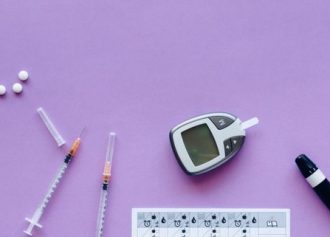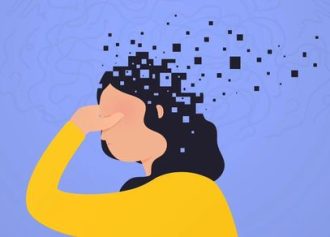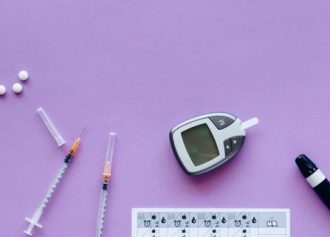
The effect of saffron extract on learning disorders caused by cerebral hypoperfusion
Medicinal saffron plant contains antioxidant compounds. The present study was conducted due to the use of this plant property as well as the need of society to treat and prevent cognitive damage that occurs due to increased oxidative stress following ischemic brain damage and cardiovascular diseases.
Production of free radicals is a natural problem and occurs during cellular respiration. Free radicals are a number of single-electron atoms and are produced during the reaction of oxygen with some molecules. If a large number of them are suddenly produced in the body, it reacts with some parts of the cell such as DNA and cell membrane and causes changes in the function of the cell or even its death. Normally, the body’s defense system neutralizes these free radicals and makes them harmless. Antioxidants are substances that increase the slow oxidation period by reducing the rate of oxidation. These substances may occur naturally. (such as anthocyanin in saffron petals) or artificially added to food. Due to the widespread prevalence of acute or chronic neurological disorders (such as: convulsive activity of the brain, Parkinson’s, Alzheimer’s, multiple sclerosis, etc.) in their pathology, free radicals play a key role directly or indirectly, as well as the limitation of existing treatment methods. , high costs and lack of success of some of these methods in the complete treatment of these disorders, it is necessary to adopt new and more effective strategies for the prevention and treatment of these diseases. In the meantime, the reduction of cerebral blood supply is one of the most important causes of brain abnormalities. Due to the reduction of cerebral blood flow, irreversible and permanent damage is caused to certain areas of the brain, and these damages will occur in aging, cardiovascular diseases, and mental abnormalities such as Alzheimer’s disease and similar cases.
Cerebral hypoperfusion, which from a clinical point of view has symptoms such as sensory and motor abnormalities, speech and vision disorders, mental problems, decreased perception, apraxia (inability to perform tasks that a person has previously), cognitive disorders, anterograde amnesia (inability to create new memories due to Brain damage) and impairment in spatial learning and memory are identified, in fact, it is a manifestation of neuronal death (necrosis or apoptosis) in different areas of the brain. Certain brain regions and types of neurons have been found to be more sensitive to reduced cerebral perfusion, including pyramidal neurons in the CA1 region of the hippocampus. Meanwhile, free radicals such as hydroxyl anions, superoxide, nitric oxide, and especially reactive oxygen species free radicals play a key role in the pathogenesis of subsequent ischemia/reperfusion processes. When the level of production of free radicals is higher than the ability to clear them by tissue/cellular antioxidant systems, or when oxidative stress occurs, free radicals can directly cause serious damage to the vital components of the cell. At the same time, the presence of oxidative conditions in the tissue causes an increase in inflammatory mediators, which will indirectly lead to double cell death. Since the production of free radicals also increases in tissue inflammatory conditions, these processes eventually lead to the initiation of a pathogenic cycle in which oxidative stress plays a central role. This point shows the necessity of using antioxidant compounds and free radical scavengers in drug research on neurodegenerative disorders with oxidative damage. In recent years, many studies have been conducted on plant species in order to find sources rich in antioxidants and their effect on different models of oxidative stress. Recent studies show that saffron plant has protective and antioxidant effects. Previous studies also indicate the protective effects of this plant on oxidative stress caused by serum glucose deprivation in PC12 cells. Based on laboratory studies, saffron has significantly shown high antioxidant properties compared to other samples. In laboratory studies, the amount of phenolic content and antioxidant properties of saffron plant have been measured by different laboratory methods. In this study, an attempt is made to investigate the effects of the alcoholic extract of the plant on the oxidative lesions caused by brain hypofusion in rats.
In this study, white male rats were divided into test and control groups, and in the test group, saffron extract was administered daily for seven days. The other group received normal saline during the same period of time. Then by performing surgery on two vessels (closure of common carotid arteries) on half of the samples of each group, a lesion of reduced cerebral blood flow (hypoperfusion) was created in them, then again for 4 consecutive days after the surgery of all the mice in the extract test group. After receiving saffron, all mice were evaluated with behavioral tests.
This research showed that the use of saffron extract has a positive effect in preventing lesions and destruction of memory and spatial learning in mice, and this improvement is parallel to the antioxidant properties of this plant. However, the possibility of other mechanisms involved in this activity by saffron has not been determined and should be studied in the future. In summary, in this research, it was found that saffron plant significantly improves cognitive deficits and learning changes caused by cerebral hypoperfusion in mice, and this effect is related to the minimal antioxidant activity of this plant. This information will be very useful when we are treating clinical cases of vascular dementia abnormalities.
Edited by






Comments